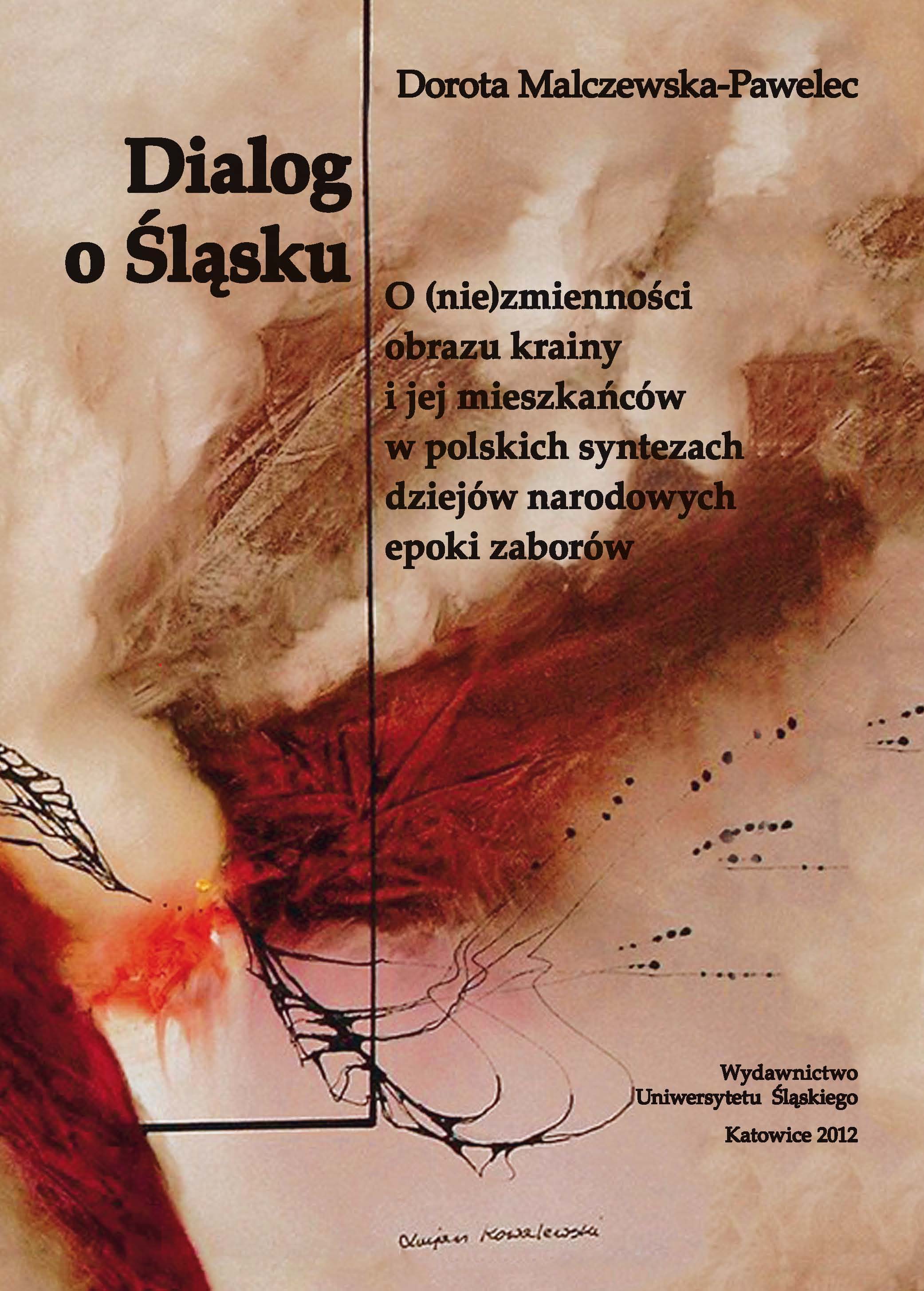Dialog o Śląsku. O (nie)zmienności obrazu krainy i jej mieszkańców w polskich syntezach dziejów narodowych epoki zaborów (studium historiograficzne)
A Dialogue on Silesia. On the (Un) Changeability of the Landscape of this Area and its Inhabitants in Polish Syntheses of the National History of the Period of Annexation (A Historiographic Study)
Author(s): Dorota Malczewska-Pawelec
Subject(s): History, Local History / Microhistory, Political history, Social history
Published by: Wydawnictwo Uniwersytetu Śląskiego
Keywords: Silesia; history of Silesia
Summary/Abstract: The very study constitutes an attempt to reflect on the ways of approaching the Silesianissues in Polish synthetic narrations written at the end of the Republic of Both Nations atthe time of a complete loss of Polish statehood. The author aimed to both reconstruct thepresence of Silesian motives in the afore-mentioned type of historical works synthetically,and recognize and capture a dynamic process of their shaping and changing. She also triedto present a specified selection of opinions on Silesia as a certain living whole, a set ofpresentations and explanations connected with complex relations of references, continuation,negation or transposition. In searching proper categories and research tools, she turned tothe theory of dialogue and studies on intertextuality deriving from it.The work consists of five chapters. In the first, the author tries to ground her considerationsin the context of an already existing historiographic tradition of researching the“Polish historical thought”, presents the theoretical assumptions, explains the conception,and discusses the empirical basis, as well as specifies the subject of research. In the secondchapter, she outlines a socio-political and historiographic-cultural context accompanyingthe appearance of the “first text”, Historya narodu polskiego by Adam Naruszewicz, developsa detailed analysis of the very work from the perspective of selected Silesian aspects, and,finally, discusses “references” — subsequent views on Silesia included in synthetic worksof the Enlightenment. In two subsequent chapters, she presents “voices” of a dialogue onSilesia heard in Romanticism and Positivism respectively in a chronological order. In eachof them, she tries to show a network of dialogue relations combining subsequent “replicas”with the most important texts of the epochs in question, syntheses by Joachim Lelewel (forRomanticism) and works by the leader of Krakow school owned by Michał Bobrzyńskiand Józef Szujski (for post-Upraising times). The scope of considerations is expanded tomonographic books at that time which to a smaller or greater extent dealt with the Silesianissues, treating them as the “providers” of the new arguments to the dialogue participants.In the fifth chapter, devoted to Neoromanticism, the author presents the first two opinionsof the subsequent segment of a dialogue process, interrupted by the outbreak of the WorldWar I, belonging to Feliks Koneczny and Józef Dąbrowski. In closing, she shows a holisticcharacteristic of a dialogue on Silesia in a synthetic way, and points to its substantialdeterminants.
- Page Count: 474
- Publication Year: 2012
- Language: Polish
- eBook-PDF
- Table of Content
- Introduction

